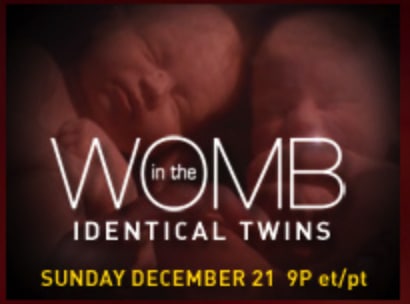National Geographic offers an interesting view into the world of identical twins tonight starting with their amazing conception and science behind their existence to profiling them in their regular lives.
Similarities between identical twins go on to be something that are often more than skin deep. Many have similar jobs, tastes, hobbies, love interests, and phobias.
To test this theory scientists have also studied twins that were separated at birth and forced to live different lives. When putting together the life timelines of these twins, it was shocking to see how their lives were almost parallel to one another before meeting while wearing almost identical outfits.
The special also explains some unusual baby phenomenons that we have covered on this site like the mismatched twins Jake and Tom Armstrong, the amazing little girl with 8 limbs Lakshmi Tatma and black and white twins.
Parents who have had a set of twins will love the amazing graphical explanations of each stage of a twin pregnancy.
National Geographic’s clear footage from inside the womb is not only amazing, but breath taking.
Some amazing twin facts from the documentary:
- About 95 percent of all multiple births in the United States are twins.
- 34 out of every 1,000 births in the United States are multiples.
- Between 1980 and 1998, the rate of triplets and higher order births in the United States increased by 400 percent. In recent years, this rate has been more stable.
- A woman has an estimated one in 64 million chance of conceiving identical quads.
- Women reaching the end of their reproductive years are more likely to have a multiple pregnancy.
- The window for an egg splitting to form identical twins is very short. If the egg doesn’t split into two separate but identical eggs within the first 14 days after conception, it never will.
- The record number of fetuses in a human womb at one time is 15.
- It’s estimated that for every 400 sets of fraternal twins, one set is made up of twins who will have different fathers.
- At birth, single babies on average weigh more than twins.
- Some fetuses spend the first trimester of pregnancy with a companion that later disappears—a phenomenon called the “vanishing twin syndrome.”
- Movements such as kicking, pushing, and what looks like kissing are all documented in twins.








This was a great program! I liked that the focus was on identical twins, as I have identical twin boys myself. Lots of new and interesting information.